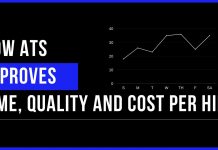Being a hiring manager I am constantly engaged with one of the major challenges – whether my employees possess the skills required for the job or not?
I am sure even you must be experiencing the similar problem at times!
If an employee lacks the skills required to do a task then this hampers the business productivity to a great extent. Also, the company can end up with increased expenses.
 So, being a hiring manager I consider it a part of my job to ensure that all my employees possess the skills needed to get the job done.
So, being a hiring manager I consider it a part of my job to ensure that all my employees possess the skills needed to get the job done.
I have found a great solution for this. And if you too land on the same platform then you must know about this! It is conducting a ‘skill gap analysis.’
What is Skill Gap Analysis?
A skill gap analysis is a really important tool for your business. No matter what size your organization is and how many people are working in there, if you have a company then this has to be there.
This analysis measures the gap between the present skills of an employee with the skills required to do a job. Mainly, it is an evaluation tool that assesses the difference between the present and future goals in a company.
With the skill gap analysis tool, you can identify the skill set and their value to the company. If there is any need identified then you can fill them accordingly. It is a powerful tool because it helps companies reduce the gap between the skills available to the skills needed in the present and near future.
Now you know what a skill gap analysis is. The next question would be why it is important for your organization. Have a look at the answer!
Why is Skill Gap Analysis Important?
There are numerous reasons to conduct a skill gap analysis for your company.
- With the skill gap analysis tool, it is possible to identify the weaknesses of an employee. If you find any employee failing to have the required skill set then you can suggest improvements. This will help to meet the present as well as future requirements of the need.
- It is an effective tool to determine the skills of employees. This, in turn, helps to boost the overall work performance in the organization.
- A skill gap analysis is beneficial for the organization as well as the employees. It will allow both of them to fulfill their professional development requirements.
- When employees get aware of their weaknesses then they can attempt to improve them. As a result, they can improve and perform better than others. This is even great for their career prospects.
- This procedure is the best to analyze the gap between desired skills and present skills set. It culminates in building effective strategies that can add the skills and fill up the gaps.
- Also, it is excellent to identify the goals required for workplace advancement. Furthermore, it can recognize deficiencies that can intervene with the growth of the company.
- A robust skill gap analysis offers a clearly defined route for professional improvement. This way an employee has increased chances of getting promoted.
- With this tool, organizations can help enhance their employee’s performance, boost employee retention and augment the overall performance to meet the bottom lines efficiently.
How to Conduct a Skill Gap Analysis:
You can conduct a skill gap analysis in your organization or team by following the below steps:
1. Planning a Skill Gap Analysis Strategy:
The skill gap analysis tool can be performed on two levels – Individual and Team level.
Individual-level:
You can conduct the skills gap analysis at an individual level. The analysis can be done while hiring a new employee or while offering a project to the employees. This way, you can compare the skills to the actual levels of the employees.
Team level:
You’ve got a huge project, but you are not sure whether your employees will be able to do it or whether you need any external hiring. The skill gap analysis can help you identify the skills within your team or organization. If you have experts on the team then it is good. But if you don’t have one, then you will be able to make external hiring within the desired time frame.
2. Conducting Skill Gap Analysis at Individual level:
When you are conducting the analysis at an individual level then you can offer the charge to the team leader. Conducting such an analysis is adequate if you are planning to change the employee’s duties, got a poor review of the performance, or need new skills for a project or a promotion.
Once you gain the results of the analysis, you can then suggest employees with improvements. The best ways to offer suggestions are training, mentoring initiatives and succession planning.
3. Conducting Skill Gap Analysis at Team or Organizational Level
Conducting the analysis at this level involves more members. Hence, you can make in-charge the team leader or even hire an external consultant to carry the process. The perfect time to conduct a skill gap analysis at the team level is when you are experiencing problems to meet business goals, want to plan a strategy that needs new skills or development of the existing ones or want to use new technologies.
Based on the results you can either hire new employees, train the existing employees, or carry mentoring initiatives.
4. Identifying Important Skills:
Once you have strategized the gap analysis process, the next step is to identify the important skills.
A large number of employers find it difficult to fill the jobs. It is because they lack appropriate knowledge about the skill gaps.
Contrary to this, there are numerous others that argue skill gaps as a result of unrealistic expectations. In both situations, you can identify the skills by considering two questions:
- What skills are valuable to the company?
- What skills are required for the employees to do the job in a more proficient way in the present time and in the future?
Consider the job descriptions of your company, business objectives as well as the company’s values and goals. Now, check for the skills your company presently have. Along with this, check for the skills that your organization would be required in the future years.
This can be done by conducting a survey of the team members. The survey must be based on the skills that the team members think they are missing. Their insights are highly valuable. Also, if you involve your employees in conducting the analysis then they will feel as an important part of the company rendering towards the company’s growth.
For example, I listed the present and future skills that my organization would require. I asked all my team members to offer their remarks on the same. After getting the results I gave numerical ratings to each skill. I find this is the best practical way to assess the skill gap.
On aggregating the individual scores I was left with a defined scale for each skill I have jotted in the list. You can use a 3-point or 5-point system based on your preferences. Give an explicit definition to the scale. For example, I selected the 5 point scale system ranging from poor to excellent.
5. Measuring Present / Current Skills:
The next important step is to measure current skills. You can use different methodologies to measure the current skills such as:
- Conducting Assessments and Surveys
- Conducting Interviews with the Employees
- Availing feedback from the performance reviews
- Using skills management software. Such software can deliver many accurate results and can deliver results in less time.
- Preparing a questionnaire covering all relevant skills. This can be done by including appropriate categories with the desired rating scale. The questionnaire can be a series of tasks, practical exercise, a multiple choice question, or an interview.
6. Skill Gap Analysis for New Employees:
It is possible that a skill gap can occur because of limited experience. This can be the case when you have hired new employees. In this case, the best way is to close the gap with on-the-job coaching.
This is a better method of formal training. Might be, your new employee does not possess training in Customer Relationship Management tools. But they possess excellent negotiation and data managing skills. In such a case, on-the-job training will be able to offer fruitful results. Hence, the training of a new employee must begin from there.
7. Determining the Skill Gap Analysis Results:
Once you have got the details with you, the next step is to determine the results and gap.
- The first step under this section is to compare the results. I prefer creating a word table for this. The table can have different categories headed at the top. The categories would be of various skills and levels. The differences between the skills possessed and skills needed or the level of skills can be mentioned in the third column.
- The second step in this section is to present a verbal explanation of the results. You can outline a simple graph for this with the curve showcasing the desired skills. There can be another curve highlighting the levels of current skills. Now, explain the gap in short explanatory terms.
8. Identifying Tactics and Strategies to Close the Gap
The next step is to identify the tactics and strategies to close the gap. For this, you can prepare strategies, findings, plans, and recommendations highlighting the way a gap can be fulfilled between the current skill levels and the desired skills.
9. Offering Training for Skill Gaps:
The most effective ways to fill the gaps is through hiring and training. So, let us first talk about the training approach.
More than 50% of the companies train their current employees and attempt to develop the skills within their staff to fill the gaps. For this, they offer training to employees in order to strengthen their skills. With appropriate training, it is possible to close the gaps between desired skills and current skill levels.
You can even impart professional training to the employees. The professional training can be offered in forms of workshops, seminars and training sessions for your employees. The formal training can offer employees with helpful resources like:
- Online courses and study material
- Subscriptions to the various useful resources
- Voluntary mentorship programs for the employee
- Opportunities to attend conferences and events
- Chances to avail certifications from various project management organizations or marketer
10. Hiring New Employees to Fill the Gaps:
Lastly, if you are unable to train the existing employees or the skills gap are too wide to be filled with training, then you can consider hiring new employees. You can follow the below steps such as:
Modify the hiring process so that you can screen the skills of employees that are as per your company needs. For instance, you can include numerical reasoning tests and write samples to hire employees with the desired skills set.
Furthermore, you can conduct structured interviews to reduce biases. This will also ensure that you outline a criterion that adheres to hiring new employees strictly as per the relevance of the job.
Skill Gap Analysis Templates
1.Skill Gap Analysis Tool for Teacher Rubrics

2.Nursing Skills Gap Analysis Template
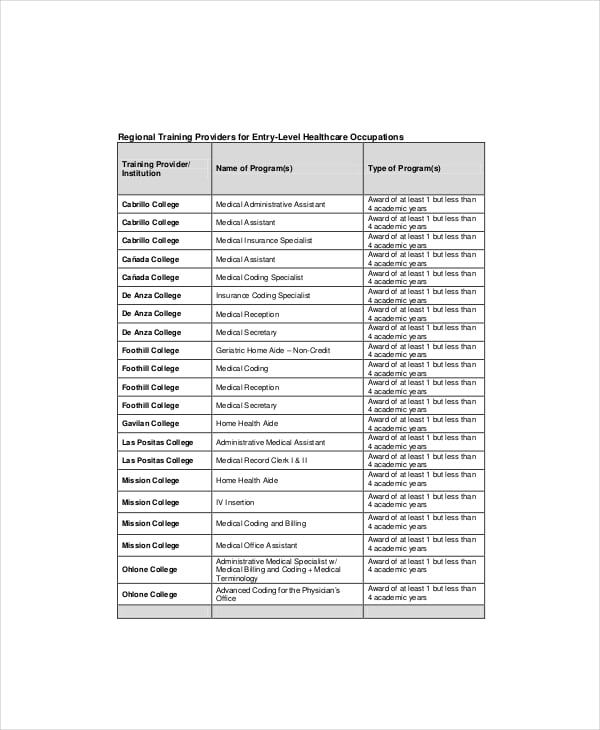
3.National Skill Development Corporation Skill Gap Analysis

4.Closing Skill Gap Analysis
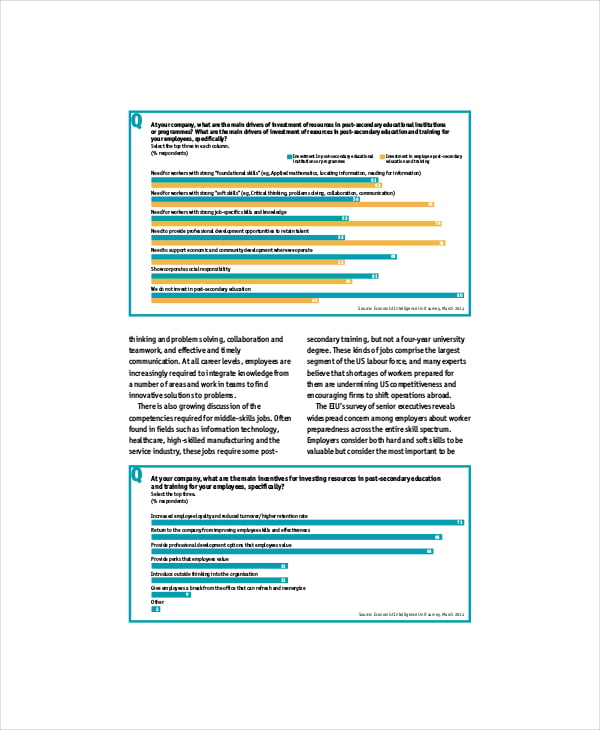
5.Personal Skill Gap Analysis
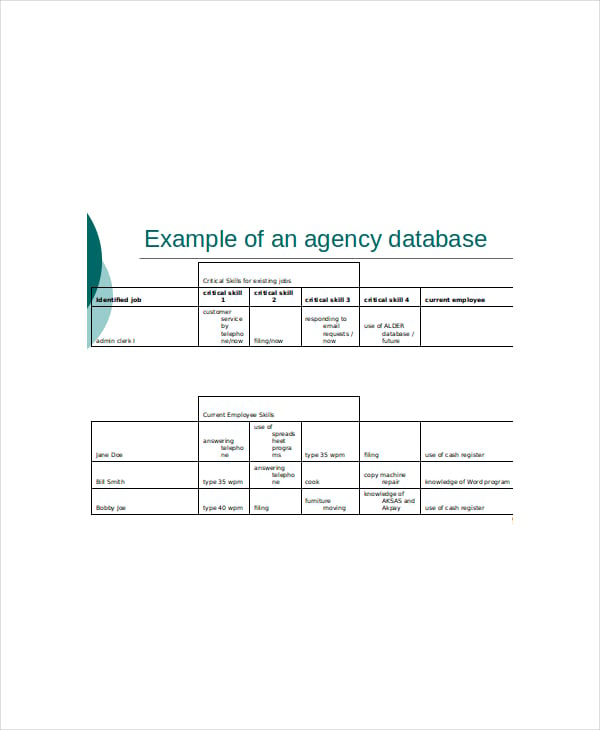
6.Employee Skill Gap Analysis
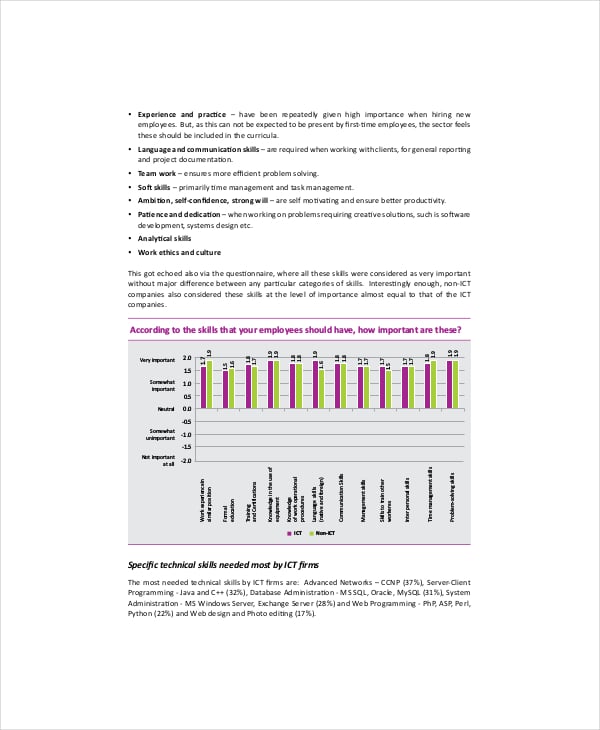
Most of the times, the candidates who possess the desired skills are not looking for a job. In such case, you need to employ effective sourcing methods such as recruiting through social networking platforms, headhunting, and more. Such methods will help you find and recruit promising candidates.
The process of skill gap analysis can be time-consuming, but it is beneficiary for the organization from various aspects. With such an analysis you can avail a comprehensive overview of your organization. It is because the analysis offers a detailed overview of all departments and team.
You can also establish priorities after completion of the analysis. It also allows making informed decisions and preparing efficient budgets. This process is great to analyze as well as engage the employees.
It is a powerful tool to ensure that evaluates the present resources of the organization. There might be some risks associated with this process, but if the risk factors are handled efficiently then this process can help organizations to have a rich resource pool delivering excellent results under all situations.

































